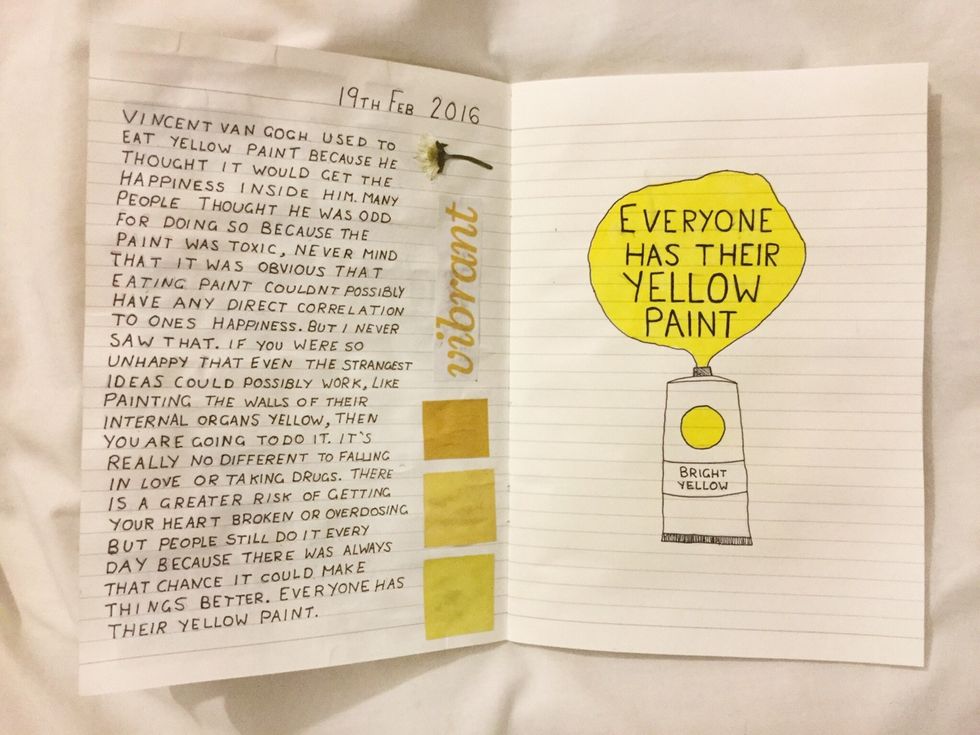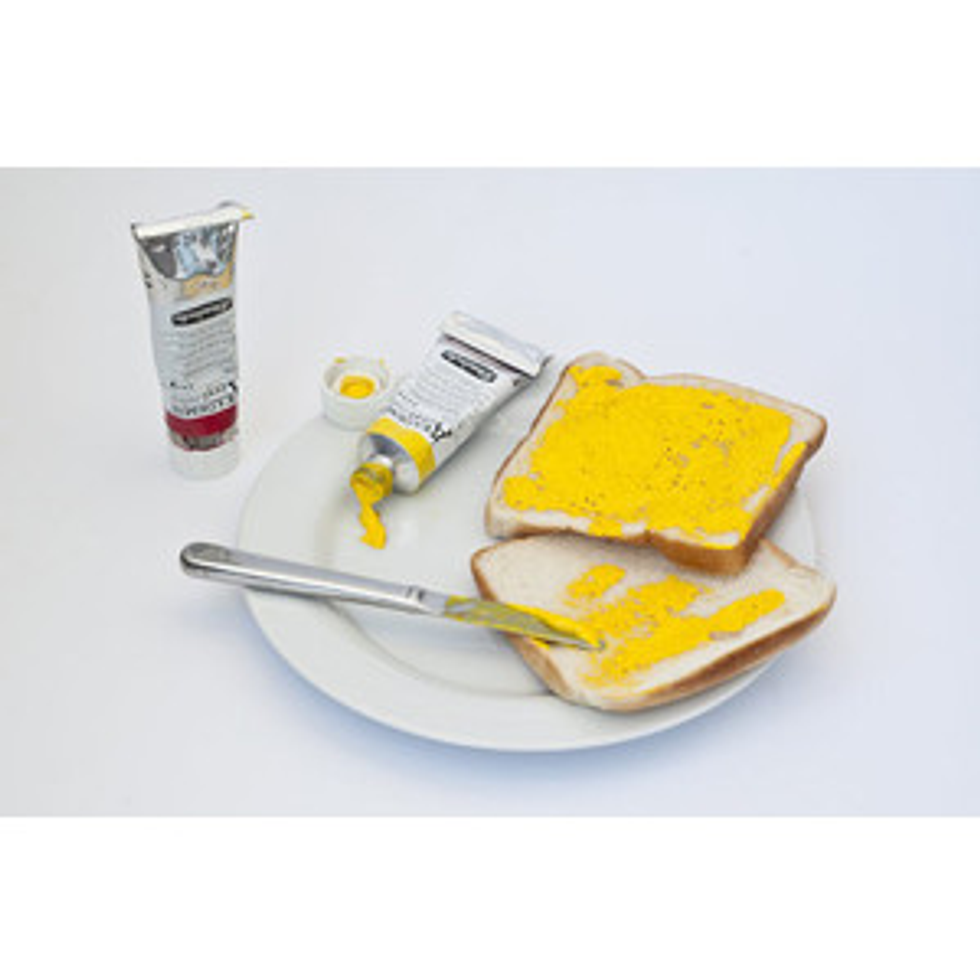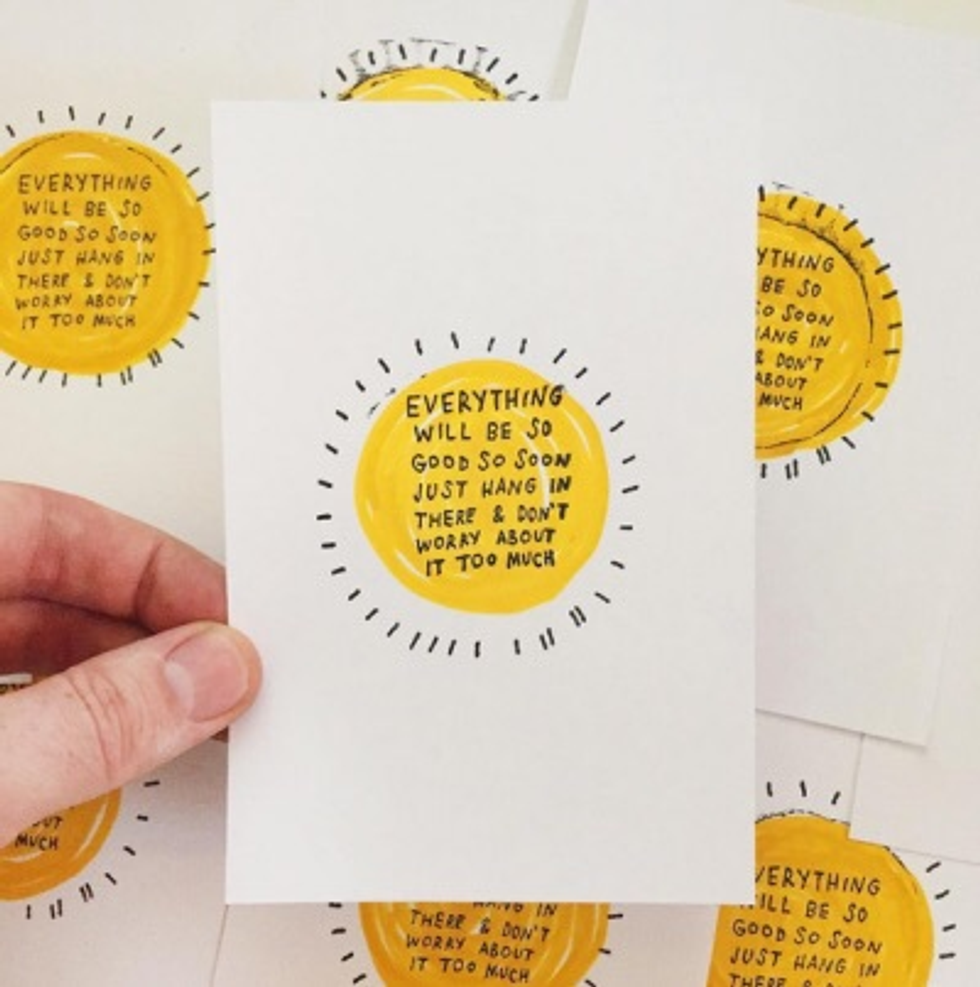“Everyone has their yellow paint.” The story goes that Vincent Van Gogh (the poster person for tortured artists, right beside Edgar Allen Poe) ate yellow paint thinking that consuming it would paint his insides bright and yellow and therefore make him happy. All too often this story is painted in an inspiring light as if the yellow paint wasn’t toxic. People romanticize this as something inspiring or beautiful as if the yellow paint wasn’t slowly killing him. After reading enough about how beautiful the yellow paint story was to some people, I wrote a poem of sorts to describe my feelings towards it.
The yellow paint symbolizes something lovely,
poetic and metaphorical,
anything that ‘makes them feel happy’.
But Van Gogh didn’t consume yellow paint for happiness or for beauty,
it was for numbness and killing the pain.
Less flowers and coffee, more cyanide and cigarettes.
Less happiness, more bone-throbbing pain.
Less feel good self-love, more lethal self-destruction.
It’s easy to view pain as beautiful.
How else are we to deal with something so ugly besides painting it into something that’s easier to look at,
nicer to view, something to inspire us rather than hurt us.
While institutionalized in Saint-Remy, his physician wrote that Van Gogh wanted to poison himself by eating paint and drinking turpentine, which was why he was not allowed in his studio while suffering from his attacks. Van Gogh’s yellow paint didn’t pave the way to his happiness and mental recovery, it threw him down a spiraling path of self-destruction and suicidal tendencies. The symbolic yellow paint took him away from his art and nearly drove him mad. Yellow paint is something that should be vilified rather than glorified. Suicide isn’t romantic and self-destruction isn’t pretty. Rather than painting over the ugliness, look at it and learn from it.

























